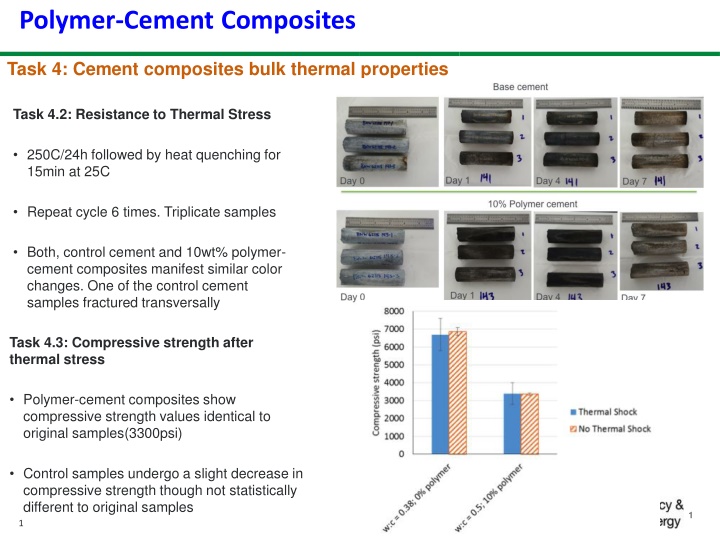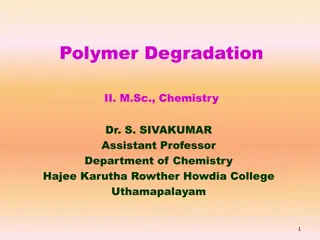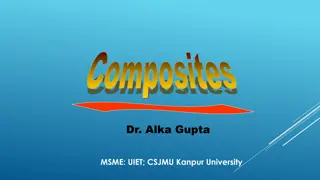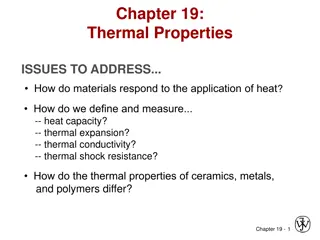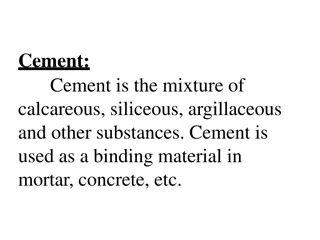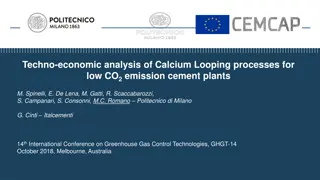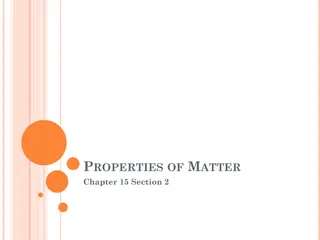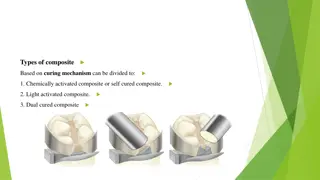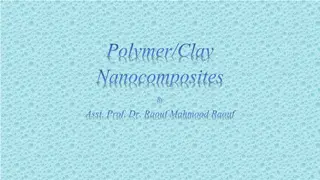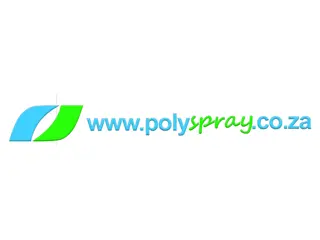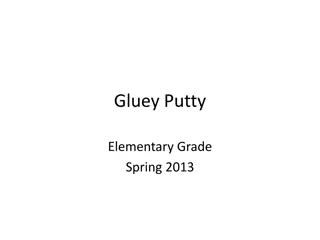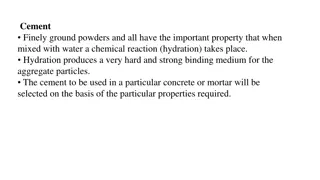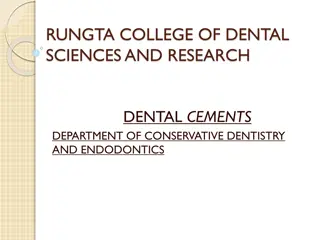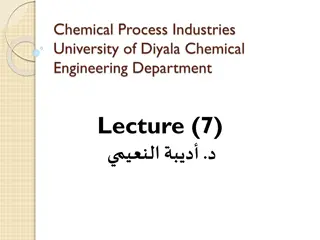Study on the Thermal and Chemical Properties of Polymer-Cement Composites
The study investigates the resistance of polymer-cement composites to thermal stress and chemical attacks such as acidic and high CO2 environments. Results show similar color changes in control cement and polymer-cement composites after thermal stress, with the latter maintaining compressive strength values identical to original samples. The composites also show resistance to acid attacks, with no significant decrease in compressive strength compared to control samples. However, exposure to high CO2 led to a significant reduction in compressive strength for the polymer-cement composites, while control samples experienced a dramatic increase. Ongoing research aims to understand the underlying effects of these observations.
Download Presentation

Please find below an Image/Link to download the presentation.
The content on the website is provided AS IS for your information and personal use only. It may not be sold, licensed, or shared on other websites without obtaining consent from the author.If you encounter any issues during the download, it is possible that the publisher has removed the file from their server.
You are allowed to download the files provided on this website for personal or commercial use, subject to the condition that they are used lawfully. All files are the property of their respective owners.
The content on the website is provided AS IS for your information and personal use only. It may not be sold, licensed, or shared on other websites without obtaining consent from the author.
E N D
Presentation Transcript
Polymer-Cement Composites Task 4: Cement composites bulk thermal properties Task 4.2: Resistance to Thermal Stress 250C/24h followed by heat quenching for 15min at 25C Repeat cycle 6 times. Triplicate samples Both, control cement and 10wt% polymer- cement composites manifest similar color changes. One of the control cement samples fractured transversally Task 4.3: Compressive strength after thermal stress Polymer-cement composites show compressive strength values identical to original samples(3300psi) Control samples undergo a slight decrease in compressive strength though not statistically different to original samples 1 1
Polymer-Cement Composites Task 5: Cement composites bulk chemical properties Task 5.1: Resistance to acid attack Samples were immersed in 1 wt.% NaCl brine containing H2SO4 with pH 2.0 (500mL), T=90C, one month exposure Fluid was changed out either daily or after 36 hours and pH measured Over 11L of H2SO4 were exchanged From a pH perspective both cements seem to be able to consume most of the available acid. Es mated? pH? at? 90? C? 12? 10? Temperature seems to play an important role in the reaction (see pH values at day 15 where heaters were not turned on) 8? pH? 6? 4? 2? 0? A reaction front is observed clearly on the polymer-cement composites 0? 5? 10? 15? 20? 25? 30? 35? Time,? days? Base? cement? [146]? (AC1)? 10%? Polymer? cement? [148]? (AC2)? Sediment was observed in both control and polymer-cement samples(photos at right) 2 2 2 2
Polymer-Cement Composites Task 5: Cement composites bulk chemical properties (cont.) Analysis of compressive strength after mineral acid attack Though exposed to pH=2 (instead of pH=1) brine solutions of H2SO4 polymer-cement composites show compressive strength values identical to original samples (3300psi) Control samples undergo 13% decrease in compressive strength 3 3 3 3
Polymer-Cement Composites Task 5: Cement composites bulk chemical properties (cont.) Task 5.2: Resistance to high CO2 in brine concentrations (performed at NETL) Base cement Samples were immersed in 1 wt.% NaCl brine pressurized with 3000psi of supercritical CO2 at 250C Samples fully immersed in 1 wt.% NaCl brine (750 mL) Samples exposed for one month by triplicate Two polymer-cement composite samples fractured transversally 10% Polymer Reaction fronts in both base cement and composite cements were similar in width 4 4 4 4
Key Accomplishments and Milestones: Polymer-Cement Composites Task 5: Cement composites bulk chemical properties (cont.) Analysis of compressive strength and structural changes after CO2 attack Exposure of polymer-cement composites reduce the compressive strength values identical by 30% (3300 to 2350psi) Control samples undergo a dramatic increase in compressive strength potentially associated to conversion of Ca(OH)2 to Ca and Ca-Si carbonates. The fact that this is not the case for the polymer-cement composites which undergo an actual reduction in compressive strength could be associated to a lower level of penetration of CO2 in the cement matrix though not evident in the pictures Work to understand this effect is ongoing. 5 5 5
